Physics 53 Polarization (4 of 5) Ninety Polarizers
TLDRIn this lecture, the presenter explores a fascinating problem involving 91 polarizers arranged sequentially with each subsequent polarizer rotated one degree from the previous one, starting with a vertical orientation. The goal is to calculate the intensity of light that passes through the final, perpendicular polarizer. The explanation walks through the process of using Malus's Law, demonstrating how the intensity diminishes with each polarizer due to the cosine squared of the angle between them. The final calculation reveals that a significant portion of light intensity is lost after the first polarizer, with minimal loss through the remaining 90, resulting in a small but notable overall reduction in light intensity.
Takeaways
- 🌟 The lecture discusses a problem involving a series of 90 polarizers, each rotated by one degree from the vertical orientation of the first polarizer.
- 🔬 The first polarizer reduces the light intensity to half of its initial value, represented as \( I_1 = \frac{1}{2} I_0 \).
- 📏 Each subsequent polarizer further reduces the light intensity by the cosine squared of the angle difference from the previous polarizer.
- 🔄 The process of calculating the light intensity after each polarizer is iterative, applying the formula \( I_{n+1} = I_n \times \cos^2(1^\circ) \).
- 📉 The intensity after passing through the 90th polarizer is significantly less than the initial due to the cumulative effect of the angle differences.
- 🧮 The final intensity is calculated by raising the factor \( 0.999695 \) to the 90th power, which represents the cumulative effect of the 90-degree rotation.
- 📉 The majority of the light intensity loss occurs at the first polarizer, with only a small percentage lost through the subsequent 90 polarizers.
- ✅ The final formula for the light intensity after all 91 polarizers is \( I_{91} = I_0 \times 0.473 / 2 \).
- 📊 The script emphasizes the importance of using a calculator for such complex calculations, which would be impractical with a slide rule.
- 🤓 The problem demonstrates the principles of light polarization and the effects of multiple polarizers on light intensity.
- 🔚 The script concludes by highlighting that only 48.6% of the initial light intensity remains after passing through 91 polarizers.
Q & A
What is the purpose of the lecture?
-The purpose of the lecture is to discuss an interesting problem involving polarizers and to calculate the intensity of light passing through a series of 91 polarizers, each rotated by one degree relative to the previous one.
What is the initial orientation of the first polarizer in the series?
-The first polarizer is oriented vertically.
How are the subsequent polarizers oriented relative to the first one?
-Each subsequent polarizer is oriented one degree further than the previous one, creating a one-degree difference between each polarizer.
What is the total number of polarizers in the setup?
-There are a total of 91 polarizers, including the first one.
What is the initial intensity of light, denoted as I sub 0, in the problem?
-The initial intensity of light, I sub 0, is not specified in the script, but it is the reference intensity from which all calculations are based.
How is the intensity of light after the first polarizer, I sub 1, related to I sub 0?
-The intensity of light after the first polarizer, I sub 1, is equal to half of I sub 0, which is 1/2 I sub 0.
What mathematical operation is used to calculate the intensity after each subsequent polarizer?
-The intensity after each subsequent polarizer is calculated by multiplying the previous intensity by the cosine squared of the angle difference between the polarizers.
What is the angle difference between each polarizer in the series?
-The angle difference between each polarizer is 1 degree.
What is the final intensity of light after passing through all 91 polarizers, denoted as I sub 91?
-The final intensity of light, I sub 91, is calculated as I sub 0 times 0.99969 raised to the 90th power, and then divided by 2.
What percentage of the initial light intensity is lost after passing through the first polarizer?
-After passing through the first polarizer, 50% of the initial light intensity is lost.
How much additional intensity is lost as the light passes through the remaining 90 polarizers?
-An additional 3% of the initial intensity is lost as the light passes through the remaining 90 polarizers.
What is the overall intensity loss through the entire setup of 91 polarizers?
-The overall intensity loss through the entire setup is approximately 51.4%, with half of that loss occurring at the first polarizer and the remaining 3% through the subsequent 90 polarizers.
Outlines
🔍 Understanding Polarizers: An Introductory Problem
In this section, the presenter introduces a complex problem related to polarizers. The problem involves 91 polarizers, with the first one being vertical and each subsequent polarizer rotated 1 degree further than the previous one. The goal is to determine the intensity of light that makes it through the last polarizer. The speaker sets up the scenario by explaining the arrangement and orientation of the polarizers, leading to a total of 90 polarizers positioned such that the last one is perpendicular to the first.
📉 Calculating Light Intensity Through Polarizers
The process of calculating light intensity as it passes through multiple polarizers is explained here. Initially, light passes through the first polarizer, reducing its intensity by half, described as I₁ = ½I₀. The intensity of light after passing through each subsequent polarizer is calculated using the formula Iₙ = Iₙ₋₁ × cos²(θ), where θ is the angle difference between the polarizers. The presenter calculates the cosine of 1 degree, which is approximately 0.999695, and uses this value to determine how light intensity changes incrementally through each polarizer.
🔄 Iterative Intensity Calculations
Continuing the calculation, the speaker shows the iterative process of determining the light intensity after passing through each polarizer. By applying the formula I₃ = I₂ × cos²(1°), and subsequently, I₄ = I₃ × cos²(1°), the pattern is established. The formula's repetitive nature reveals a consistent reduction in light intensity. Each iteration involves multiplying by 0.999695, indicating a small but cumulative effect as light passes through each additional polarizer.
🔗 Connecting the Intensity Calculations
Here, the speaker ties the individual calculations together, explaining how each intensity step relates to the initial intensity. The equation for I₃ is reformulated as I₃ = I₁ × (0.999695)², connecting back to the starting intensity, I₁. This pattern continues such that I₄ = I₁ × (0.999695)³, demonstrating a cumulative multiplication effect that ties each stage of light intensity reduction to the first polarizer's output.
🧮 Solving the 90 Polarizer Challenge
The speaker addresses the challenge of calculating light intensity after passing through all 90 polarizers. The intensity equation I₉₁ = I₁ × (0.999695)⁹⁰ is derived, representing the cumulative effect of passing through each polarizer. The importance of modern calculators is highlighted, as they allow for precise computation of such complex equations, a task that would have been daunting with older tools like slide rules.
💡 Final Intensity and Key Observations
The solution is reached by calculating the final intensity, I₉₁, using I₁ = ½I₀, resulting in I₉₁ = 0.486 × I₀. This result illustrates that the majority of light intensity is lost at the first polarizer, with only a small fraction (3%) lost as light passes through the subsequent 90 polarizers. The speaker emphasizes how understanding the principles of polarizers can lead to insights into the nature of light and its interaction with materials, showcasing the importance of the problem-solving approach presented.
Mindmap
Keywords
💡Polarisers
💡Intensity of Light
💡Cosine Squared
💡Malus's Law
💡Degrees
💡Transmitted Intensity
💡Optical Filters
💡Plane of Vibration
💡Cumulative Effect
💡Calculators
💡Slide Rule
Highlights
Introduction to an interesting problem involving polarizers.
Description of a setup with 91 polarizers, each rotated by one degree relative to the previous one.
The first polarizer is vertical, and the setup aims to measure the intensity of light after passing through all 91 polarizers.
Explanation of the initial light intensity, I_1, being half of the initial intensity, I_0.
Calculation of I_2 using the cosine squared of the angle difference between polarizers.
Demonstration of how to calculate the light intensity after passing through each subsequent polarizer.
The process of iteratively calculating the light intensity through multiple polarizers.
The mathematical formula used to calculate the intensity after the 90th polarizer.
The significance of the small angle approximation used in the calculations.
The cumulative effect of the small angle differences on the final light intensity.
The final calculation of I_{91} as I_0 times 0.473.
Discussion on the majority of light intensity loss occurring at the first polarizer.
The minimal loss of light intensity through the remaining 90 polarizers.
The practical application of understanding light polarization and its intensity after passing through multiple polarizers.
The importance of using calculators for complex calculations in physics problems.
The conclusion that only a small percentage of the initial light intensity is lost after passing through 90 polarizers.
The overall process of solving a physics problem involving polarizers and light intensity.
Transcripts
Browse More Related Video
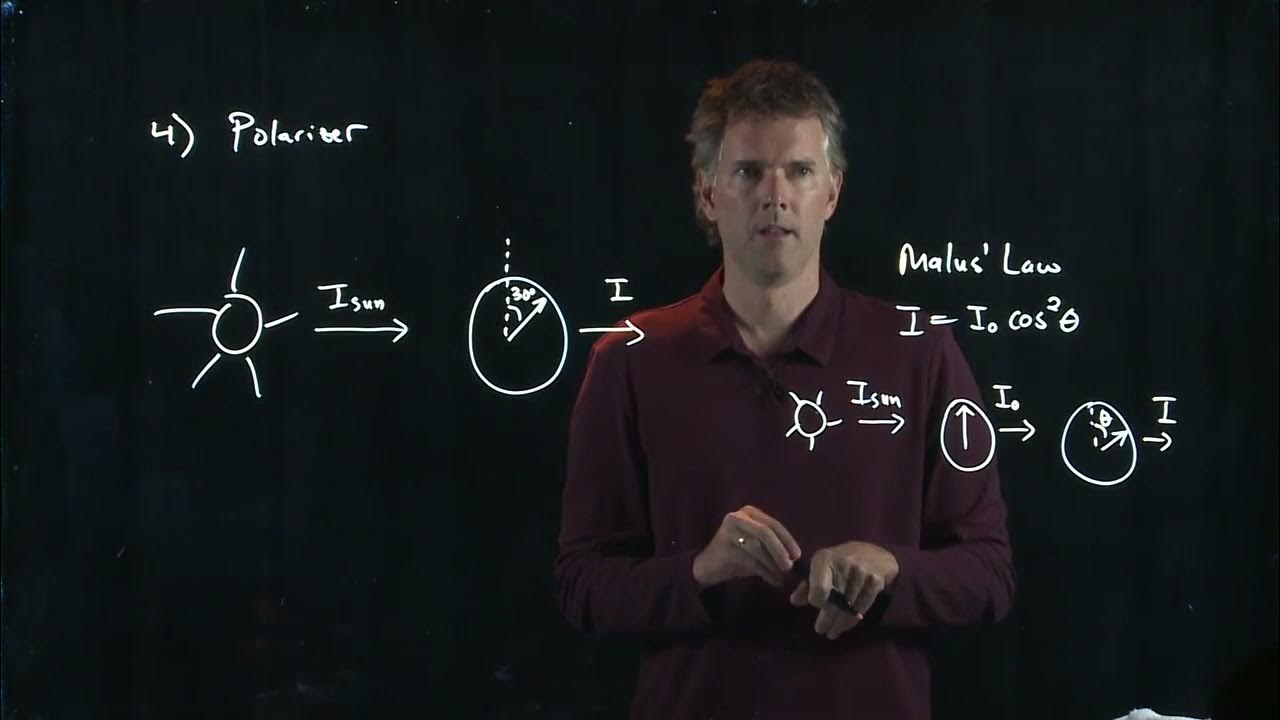
The Polarizer | Physics with Professor Matt Anderson | M28-17
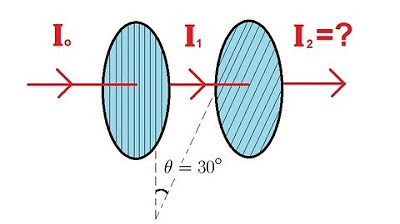
Physics 53 Polarization (2 of 5) Two Polarizers

Physics 53 Polarization (3 of 5) Three Polarizers
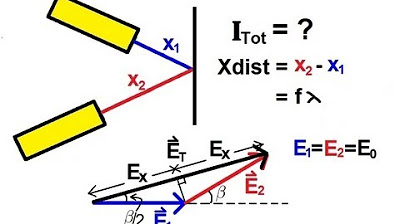
Physics 60 Interference of Light (3 of 8) Path and Phase Difference: General Case
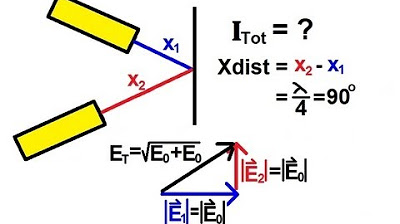
Physics 60 Interference of Light (2 of 8) Path and Phase Difference
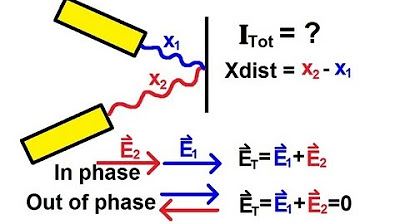
Physics 60 Interference of Light (1 of 8) Path and Phase Difference: Introduction
5.0 / 5 (0 votes)
Thanks for rating: